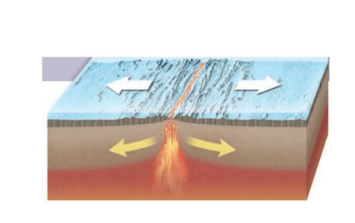Discuss the origin of soils
Much of Earth's land surface is covered by a layer of regolith consisting of sediment, pyroclastic materials, and the residue formed in place by weathering. Part of the regolith that contains air, water, and organic matter and supports vegetation is soil. An important constituent of soil is humus, which is carbon that forms by bacterial decay of organic matter and is very resistant to further decay. It is essential as a source of plant nutrients and it enhances a soil's capacity to retain moisture.
The solid particles in soils may be sand- and silt-sized mineral grains, such as quartz, feldspars, and others, which hold soil particles apart and allow oxygen and water to circulate more freely. Clay minerals are also important, because they supply nutrients to plants and aid in soil–water retention. Soils are classified as residual or transported depending on whether they formed in place or the materials composing them were transported from the weathering site.
You might also like to view...
The figure below shows a ________ boundary.

A. convergent
B. hot spot
C. divergent
D. transform
A bullet fired horizontally hits the ground in 0.5 s. If it had been fired with twice the speed in the same direction, it would have hit the ground in
A) less than 0.5 s. B) more than 0.5 s. C) 0.5 s.
Which of the following make HIV such a deadly and persistent virus?
A) It attacks helper T cells. B) It is slow acting. C) both a and b D) neither a nor b
Western North America is the leading edge of the ________ plate
Fill in the blank(s) with correct word